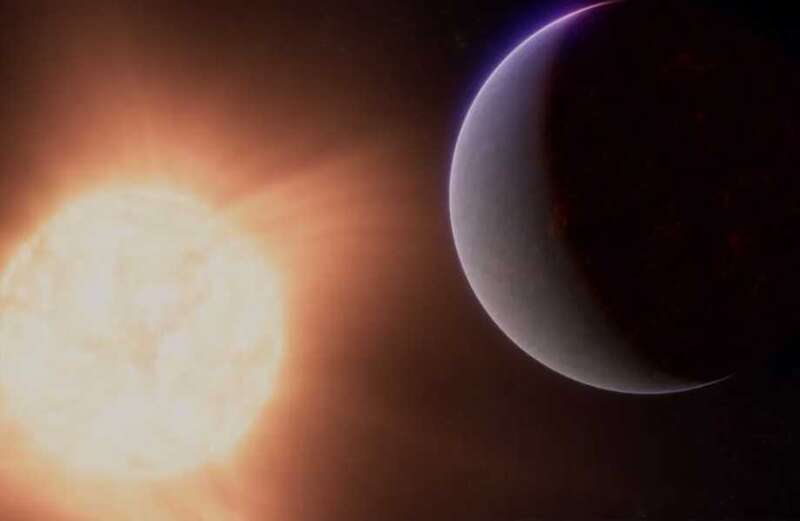SCIENTISTS have discovered that a fiery hell planet may have its own atmosphere and is covered in a sea of molten magma.
55 Cancri e was discovered in 2004 and has remained a mystery to scientists who have been studying it for two decades.


Also known as Janssen, the planet is located about 40 light-years away from Earth and is one of five known planets orbiting the Sun-like star 55 Cancri, according to NASA.
The exoplanet is classified as a "super-Earth" as it is twice the diameter of Earth and sits between the size of our home planet and Neptune.
It orbits so closely to its star, about 45 of the distance between Mercury and the Sun, that the entire surface of the planet is a bubbling ocean of hot magma with temperatures hot enough to melt iron, according to Live Science.
 Charming UK village is 'UFO hotspot' with 'NASA scientists showing interest'
Charming UK village is 'UFO hotspot' with 'NASA scientists showing interest'
Researchers have ponded what kind of rocks could live on a planet with such hot temperatures.
"The planet is so hot that some of the molten rock should evaporate," explained Renyu Hu from NASA’s Jet Propulsion Laboratory, according to NASA.
So they still believed, even with the extreme heat, 55 Cancri e was bare except for vaporized rock, rich in elements like silicon, iron, aluminum, and calcium.
NASA also observed that because it orbits so closely to its star, the planet may be tidally locked, meaning it cannot spin, so one side of the planet is always blanketed with light while the other is in never-ending darkness.
Questions regarding the planet included its orbit cycle, its density, but mostly whether or not it had an atmosphere.
NEW INFORMATION
The James Webb Space Telescope has shared groundbreaking evidence pointing to the boiling hot planet having a unique atmosphere.
Scientists used multiple techniques to suggest that it exists.
They used JWST's Near-Infrared Camera and Mid-Infrared Instrument to measure 4-to-12-micron infrared light coming from the planet.
The technology isn't able to take a picture of the planet, but it has the ability to measure small changes in light as it orbits 55 Cancri.
Researchers used secondary eclipse spectroscopy to determine whether an atmosphere was present.
 Astronomer leads hunt for Northern Lights 'sound' rarely heard in the aurora
Astronomer leads hunt for Northern Lights 'sound' rarely heard in the aurora
They subtracted the star's brightness during the secondary eclipse, as it passes behind the star, from the planet and star's brightness when they are side by side.
By doing so, scientists were able to find infrared light coming from the dayside of the planet.
Another way they suggested there was an atmosphere was from the planet's thermal emission in the form of inferred light.
If the planet is how they believe with dark molten rock and floating vaporized rock, the side of the planet that faces the star should be about 4,000 degrees Fahrenheit.
"Instead, the MIRI data showed a relatively low temperature of about 2,800 degrees Fahrenheit [~1540 degrees Celsius],” said Hu, per NASA.
"This is a very strong indication that energy is being distributed from the dayside to the nightside, most likely by a volatile-rich atmosphere."

They also observed using the NIRCam data that there is a drop in the spectrum between 4 and 5 microns suggesting that there is carbon monoxide or carbon dioxide which absorbs the wavelengths of light, according to NASA.
A planet with no atmosphere or only one of vaporized rock wouldn't have that feature.
The scientists also considered the molten lava on the planet as they discussed the possible atmosphere.
They believe that magma is bubbling from the interior because any outside gas would be long gone.
Though the planet is inhabitable, researchers think it could be a tool to study interactions between atmospheres, surfaces, and the inner workings of rocky planets.
"Ultimately, we want to understand what conditions make it possible for a rocky planet to sustain a gas-rich atmosphere: a key ingredient for a habitable planet," said Hu, according to NASA.


































